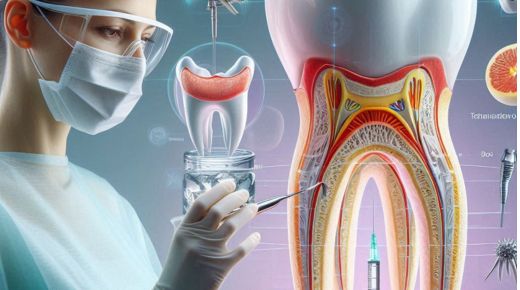Newton Center cosmetic dentistry offers sinus augmentation, commonly referred to as a sinus lift, which is a surgical procedure designed to enhance the upper jawbone’s density, facilitating successful dental implant placement. This complex procedure involves elevating the sinus membrane and grafting bone into the sinus cavity to create a stable implant foundation. While sinus augmentation can vastly improve oral function and aesthetics, understanding the procedure and recovery process is crucial for optimal outcomes.
In this article, we will explore sinus augmentation’s step-by-step procedure and provide valuable insights into post-surgical care and recovery.
What is sinus augmentation?
Sinus augmentation, also known as a sinus lift, is a dental surgical procedure that involves elevating the sinus membrane and grafting bone into the sinus cavity to increase the density and volume of the upper jawbone. This procedure is typically performed to support dental implants in the posterior maxilla, where insufficient bone density or volume exists due to tooth loss, gum disease, or sinus enlargement. By augmenting the sinus floor, sinus augmentation enables successful implant placement, restoring oral function, aesthetics, and overall quality of life for individuals with compromised upper jawbone structure.
Types of sinus augmentation procedures
- Lateral window sinus lift: The most common approach, involving a window created in the jawbone.
- Transcrestal sinus lift: A less invasive approach, using a specialized instrument to elevate the sinus membrane.
- Osteotome-mediated sinus lift: A minimally invasive technique using specialized instruments.
How is sinus augmentation performed?
The sinus augmentation procedure involves several steps:
Preoperative Preparation
- Initial consultation: Evaluate the patient’s overall health, dental history, and sinuses.
- Imaging studies: CT scans or panoramic radiographs to assess sinus anatomy.
- Medical clearance: Ensure the patient’s medical history is suitable for surgery.
Surgical Procedure
Step 1: Anesthesia and Access
- Local anesthesia or conscious sedation.
- An incision in the gum tissue to access the jawbone.
Step 2: Lateral Window Technique
- Creation of a small window in the jawbone (lateral window).
- Exposure of the sinus membrane.
Step 3: Sinus Membrane Elevation
- Gentle elevation of the sinus membrane using specialized instruments.
- Creation of space for bone grafting.
Step 4: Bone Grafting
- Placement of bone graft material (autogenous, allogenic, or xenogenic).
- The graft material is packed into the sinus cavity.
Step 5: Closure
- Closure of the lateral window with bone plates or membranes.
- Suturing of the incision site.
What do post-care and recovery involve?
Here’s a comprehensive guide to post-care and recovery after sinus augmentation:
Immediate Post-Surgical Care (First 24-48 hours)
- Rest: Avoid strenuous activities, bending, or heavy lifting.
- Pain management: Follow the prescribed pain medication regimen.
- Antibiotics: Take as directed to prevent infection.
- Swelling and bruising: Apply ice packs to reduce swelling.
- Bleeding: Mild bleeding is normal; report excessive bleeding.
- Diet: Soft food diet (e.g., yogurt, soup, scrambled eggs).
- Hydration: Drink plenty of fluids.
Short-Term Recovery (First 1-2 weeks)
- Follow medication regimen: Antibiotics, pain relievers, and anti-inflammatory medications.
- Monitor for infection: Watch for signs of infection (e.g., fever, increased swelling).
- Manage swelling: Continue ice packs, and elevate head while sleeping.
- Soft food diet: Gradually introduce semi-solid foods.
- Avoid:
- Strenuous activities
- Smoking and tobacco products
- Drinking through straws
- Spitting or rinsing forcefully
Medium-Term Recovery (2-6 weeks)
- Suture removal: Follow-up appointment for suture removal.
- Follow-up appointments: Regular check-ups to monitor healing.
- Gradual return to normal activities: Resume light exercise and work.
- Diet: Progress to a normal diet, avoiding hard or crunchy foods.
- Oral hygiene: Gentle brushing, flossing, and rinsing.
Long-Term Recovery (6-12 months)
- Bone graft integration: Allow 3-6 months for graft integration.
- Implant placement: Schedule a follow-up appointment for implant placement.
- Follow-up appointments: Regular check-ups to monitor implant integration.
- Maintenance: Regular dental cleanings, and exams.
Sinus augmentation is a highly effective procedure for individuals requiring dental implants. Understanding the procedure and recovery process can help alleviate anxiety and ensure a smooth experience. Patients can optimize their recovery and achieve successful implant placement by following post-surgical instructions and attending follow-up appointments.



